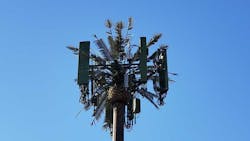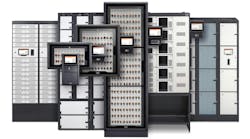Edge Computing Use Cases: From AI and Telehealth to Factories and 5G
This portion of a new special report from Data Center Frontier takes a look at some of the most prominent and growing examples of edge computing business cases in 2020 and amid the COVID-19 pandemic, ranging from AI and telehealth to autonomous cars and 5G infrastructure.
Get the full report.
For edge computing to succeed, advances in proximity and latency must translate into business value that can justify the considerable expense of creating a massively distributed network. Who are the users driving demand for edge computing? And what are the use cases that will deliver on this new architecture?
Large enterprise users affirm their readiness to invest in edge strategies, establishing a market beyond the telcos and content players.
“Edge computing gives us that real-time agility and responsiveness at the edge,” says Gartner’s Bittman. “Digital business is completely disruptive to your infrastructure. We’re blurring the lines between physical and digital. It creates new interactions between businesses and people and things.”
The earliest use cases will be those that help networks operate more cost-effectively.
Prominent Examples of Use Cases for Edge Computing
Artificial Intelligence
AI can make services and devices smarter and is high on the “must-have” list for most companies, especially in the tech sector. A group of hardware startups are developing energy-efficient chips for mobile AI that will bring beefier processing power to smartphones and other edge devices. Some data will be offloaded to aggregation points or directly to the cloud. As AI becomes more powerful and distributed, new edge use cases will emerge. “In the next few years, we’ll have a massive switch to the edge,” says Steve Jurvetson of Future Ventures, a veteran venture capitalist and chip engineer who was an early investor in Tesla and SpaceX. “AI is potentially going to dominate all other forms of programming, and AI needs the edge. It’s difficult to build an intelligent system without an edge presence.”
“AI is potentially going to dominate all other forms of programming, and AI needs the edge. It’s difficult to build an intelligent system without an edge presence.” – Steve Jurvetson, Future Ventures
Content Delivery
The oldest edge use case is more compelling than ever, as traditional CDN use cases get super-sized to handle 4K streaming video at scale. It’s not just Netflix anymore, as the emergence of Disney+, HBO Max and Peacock shifts more video onto fiber networks.
The packed arena at the League of Legends championship finals held in November in South Korea, which streamed to 99 million eSports enthusiasts.
(Source: Riot Games)
Video Gaming
Perhaps the fastest-growing consumer use case for low-latency connectivity is video gaming and eSports, where “lag” is the enemy. The launch of Google Stadia and other streaming gaming platforms will place significant demand on the latency of existing network infrastructure.
TV and Film Production
The original “Netflix problem” was getting video to consumers. As more streaming services become content producers, they are keen to revamp the on-location film production, in which couriers are used to deliver “dailies” to studios. Netflix, for one, sees edge computing as a way to accelerate this process. It’s not an accident that the first Amazon Web Services (AWS) Local Zone is in Los Angeles.
As more streaming services become content producers, they are keen to revamp the on-location film production, in which couriers are used to deliver “dailies” to studios.
5G Infrastructure
Mobile networks are making huge investments in new infrastructure for fifth-generation networks. Analysts expect this to gather momentum in 2021 and 2022.
4G Infrastructure
Existing mobile networks continue to be tested by demand for new services and existing applications. “The care, feeding and monitoring of fiber networks on a backhaul scenario is not sexy, but the economics are significant,” says Chris Crosby, CEO of Compass Datacenters. “You have too many ‘Things’ that require a lot of capacity.”
Factory Automation
As the factory floor is automated and instrumented, it is producing large volumes of data with potential business value. Having compute power on-site or nearby enables factory operators to run analytics to perform data thinning. Many industrial cities and towns currently have minimal data center infrastructure.
Telemedicine
One of the primary pandemic-driven growth sectors is telemedicine, which quickly shifted from an option to a necessity for doctors and patients. Telemedicine services will require more local infrastructure over time as they integrate high-resolution medical imaging like CAT scans.
Attendees at a recent Gartner data center conference in Las Vegas sampling a virtual tour of an NTT/RagingWire data center.
Virtual Reality (VR) and Augmented Reality (AR)
In some ways, the pandemic has been a missed opportunity for VR due to the limited availability of the most popular headsets. Some edge advocates believe edge capacity can reduce latency in a way that can make AR and VR more accessible to a mass audience, including solving motion sickness issues. “Things like this that are just on the verge of working can now cross over,” says Adrian Cockcroft, the VP of Cloud Architecture at AWS. “If you can make that (latency) loop tight enough, your brain starts accepting it as reality.”
Autonomous Vehicles
Self-driving cars will be among the most sophisticated edge devices, with massive on-board processing power and wireless connectivity to download and upload data for analytics, forensics and algorithm refinement. Autonomous cars could generate up to 5 TB of data an hour, according to estimates from the Automotive Edge Computing Consortium (AECC). “Autonomous cars are one of the poster children for edge computing,” says AECC board member Vish Nandlall.
Business practices also create some challenges. The vision for a new architecture doesn’t always align with historic business practices in key tenant segments.
As an example, edge peering at tower sites would be a meaningful shift in how these locations have managed data traffic. The major tenants at towers have been mobile network operators (MNOs), whose antennas provide wireless service for cell phone users. From the tower, each MNO moves data from its base station back to its wireline network, a process known as backhaul. In the mobile world, data often flows from the traffic to the core before it finds its way to its destination — a practice known as “tromboning.”
See the full report for a thorough list of the significant players to take note of in the edge computing industry.
And catch up on the first article in the series here that highlighted edge computing and why it matters, while the second explored the many layers and locations of ‘the edge’. Next week, this new special report series will finish up by highlighting three considerations to take into account when deploying edge computing solutions.
Download the full report, courtesy of Chatsworth Products, “Edge Computing: A New Architecture for a Hyperconnected World,“ that explores the possibilities of the edge data center and how edge computing is changing the colocation and data landscape of today.
About the Author



